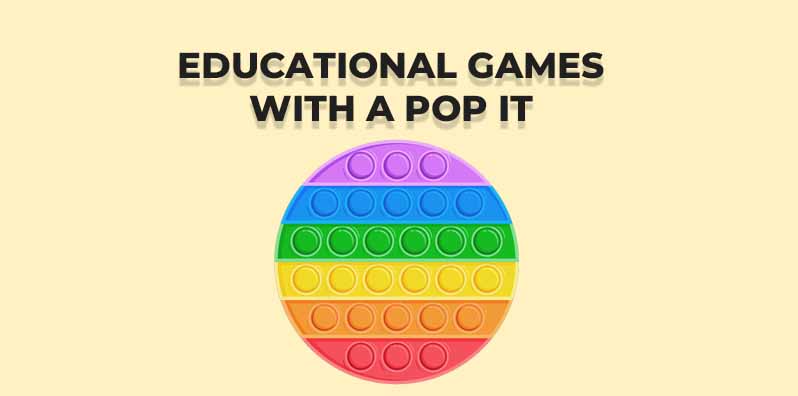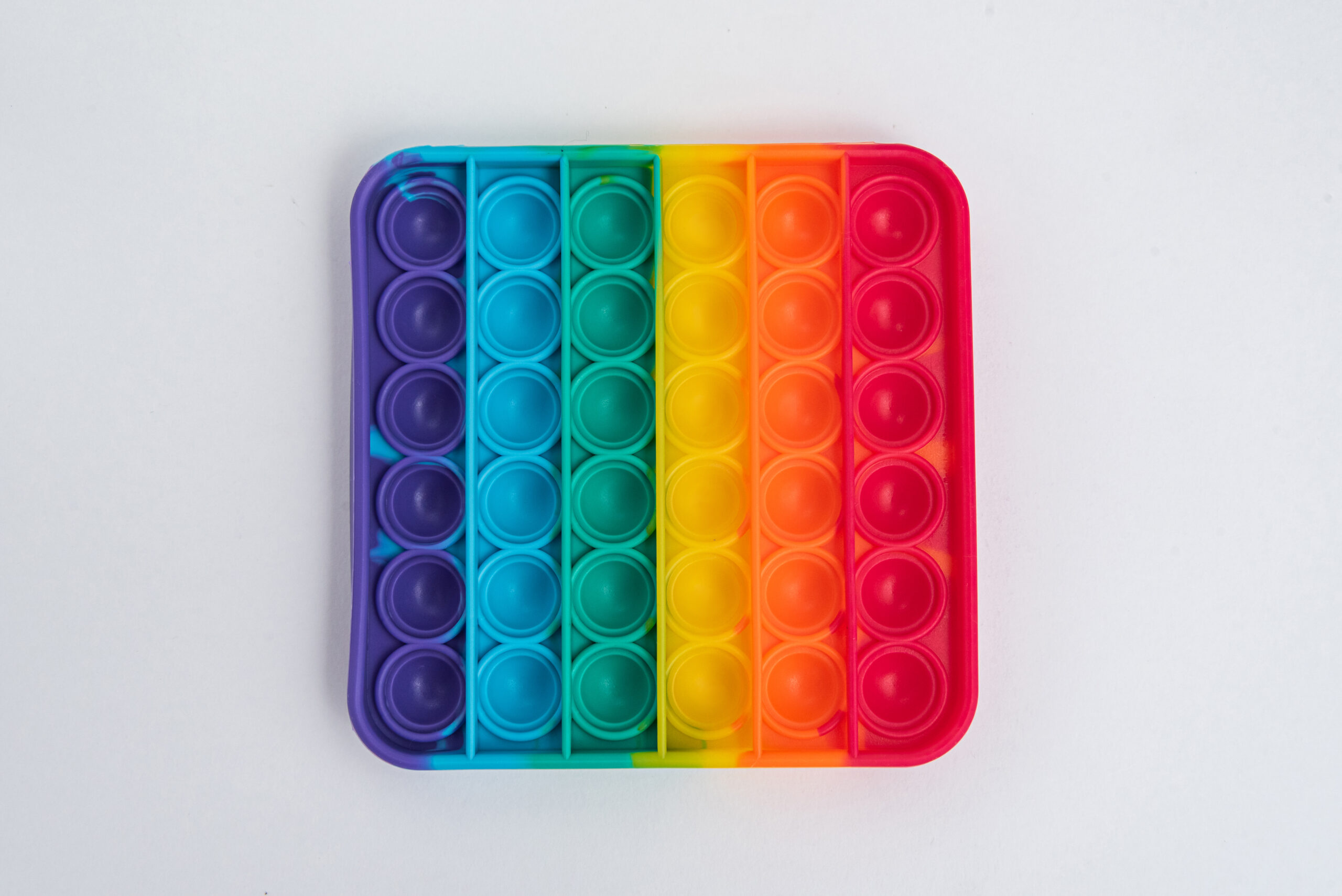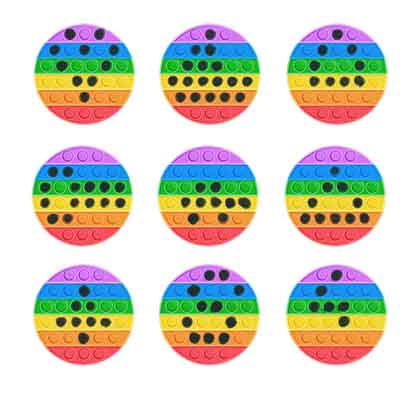
The Pop It toy isn’t just a fun fidget—it’s also a great educational tool! Below, you’ll find detailed instructions for 10 games that turn this simple toy into a playful learning experience.

1. Learning to Count
How to Play:
- Ask your child to pop a specific number of bubbles, e.g., “Can you pop 5 bubbles?”
- Once they’re comfortable, introduce basic math. For example, say, “Pop 3 bubbles, and then 2 more. How many did you pop in total?”
- You can also count backward: “Pop 8 bubbles and then un-pop 3. How many are left?”
Benefits: Teaches counting, addition, and subtraction in a tactile and fun way.
2. Pattern Play
How to Play:
- Create a pattern by popping bubbles (e.g., pop 2 bubbles, skip 1, pop 2). You can use the examples below.
- Show your child the pattern and ask them to replicate it on their own Pop It.
- As they improve, make the patterns more complex by varying the number of pops or skipping multiple bubbles.

Benefits: Develops pattern recognition and logical thinking.
3. Learning Letters and Syllables
How to Play:
- Assign each bubble a letter of the alphabet. As your child pops a bubble, have them say the corresponding letter out loud.
- For spelling practice, say a simple word and ask them to pop bubbles for each letter in the word. For example, for “cat,” they pop 3 bubbles, one for each letter.
- For syllable practice, they can pop one bubble per syllable in a word (e.g., “but-ter-fly” = 3 pops).
Benefits: Builds letter recognition, phonics skills, and early spelling abilities.
4. Math Challenges
How to Play:
- Give your child a math problem, like “4 + 3.” Ask them to pop 4 bubbles and then 3 more.
- Have them count the total number of bubbles they popped to find the answer.
- For older kids, introduce multiplication or division, e.g., “Pop 2 bubbles 5 times. How many did you pop in total?”
Benefits: Makes math practice hands-on and engaging.
5. “Pop and Name” Game
How to Play:
- Choose a category (e.g., animals, colors, or fruits).
- Each time your child pops a bubble, they have to name something from that category. For example, if the category is animals, they might say “dog,” “cat,” or “elephant.”
- If they can’t think of a new word, the game resets, and you can start with a different category.
Benefits: Enhances vocabulary and critical thinking under pressure.
6. Bubble Race
How to Play:
- Challenge your child to pop bubbles in numerical order, starting from 1 (e.g., 1, 2, 3, up to 10).
- Use a timer to make it more exciting and encourage them to beat their previous time.
- If you have more than one Pop It, make it a race between players to see who finishes first.
Benefits: Improves numerical order recognition and quick thinking.
7. Color Matching
How to Play:
- Point to a specific color on the Pop It and ask your child to pop all the bubbles of that color.
- Make it more challenging by saying, “Pop 3 yellow bubbles and 2 red ones.”
- You can also ask them to alternate colors while popping, like “Yellow, red, yellow, red.”
Benefits: Teaches color recognition and improves focus.
8. Story Time Pop
How to Play:
- Each time your child pops a bubble, they must add one part to a story. For example:
- Bubble 1: “Once upon a time, there was a dog.”
- Bubble 2: “The dog went to the park.”
- Continue until all bubbles are popped or the story reaches an ending.
Benefits: Encourages creativity and storytelling skills.
9. Symmetry Fun
How to Play:
- Pop bubbles on one half of the Pop It, creating a unique pattern.
- Ask your child to replicate that pattern on the opposite half to make it symmetrical.
- Swap roles and let your child create a pattern for you to mirror.
Benefits: Introduces the concept of symmetry and strengthens spatial awareness.
10. “Guess How Many” Challenge
How to Play:
- Pop a random number of bubbles while your child closes their eyes.
- Ask them to guess how many bubbles you popped based on the sound.
- Let them check their answer by counting the popped bubbles.
Benefits: Sharpens listening skills and helps with estimation.
Final Thoughts
These games are a fun way to make learning interactive and enjoyable for kids. With just a Pop It toy, you can teach math, language, creativity, and more. Which game will you try first? Let us know in the comments! 🎉

